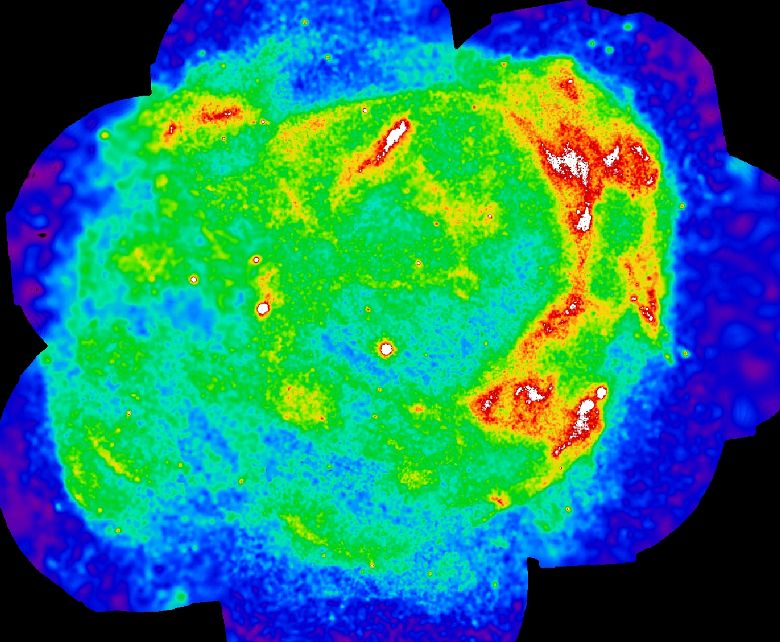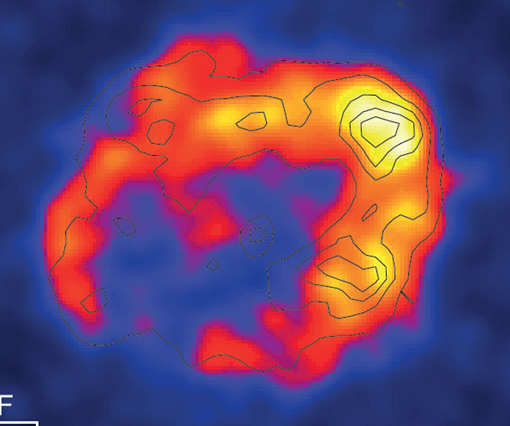I4 : The youth of cosmic rays and their emergence in the interstellar clouds
-
Despite the recent advances in high-energy observations and modeling, the solution to the century old question of the origin of cosmic rays is still pending, with a number of key questions to be settled.
- What fraction of the shock energy is tapped by cosmic rays and what maximum energy can they reach, especially if the shock wave expands in a clumpy medium?
- How does the acceleration depend on the magnetic field orientation?
- When and how are the particles escaping?
- While we now have solid evidence that very energetic electrons are accelerated by the strong shock waves of supernova explosions, through the diffusive process known as Fermi acceleration, we still have no direct firm evidence for ion acceleration.
To resolve the above questions, multi-wavelength observations from radio, X-ray and gamma rays up to very high energy are required to characterize both the thermal and non-thermal plasma properties. Sophisticated models including the physical processes
associated to these components (thermal plasma, cosmic rays, magnetic field) are mandatory.

The supernova remnant RX J1713-3946, seen in X-rays with the XMM-Nexton observatory (left) and seen in TeV gamma-rays with the H.E.S.S. experiment (right)
The project aims at observing and characterizing the impact of the young (freshly released) and energetic cosmic rays on the clouds irradiated around the source. Our strategy is to combine multi-wavelength observational and modeling approaches for a complete study of the cosmic-ray production source and of the irradiated clouds. It will represent an important and novel step in linking the more global cosmic-ray and interstellar studies at the Galactic scale, allowing, with the advent of the CTA observatory (>2014), to bring new answers to the origin of the high-energy cosmic rays in the Galaxy. This strategy is made possible by the complementary skills of the APC and AIM teams. The latter, thanks to its experience in hydrodynamics and acceleration processes in supernova shocks, provides models of supernova remnants and expertise in the data analysis to study the few remnants that can be imaged at all wavebands; while the former has a solid knowledge of cosmic-ray diffusion in the interstellar medium and expertise on interstellar clouds. Both are actively involved in analyzing very high-energy instrument data and are participating to the future international CTA Observatory.
-
- Anne Decourchelle (AIM)
- Régis Terrier (APC)
- Melitta Naumann-Godo (APC/AIM)
